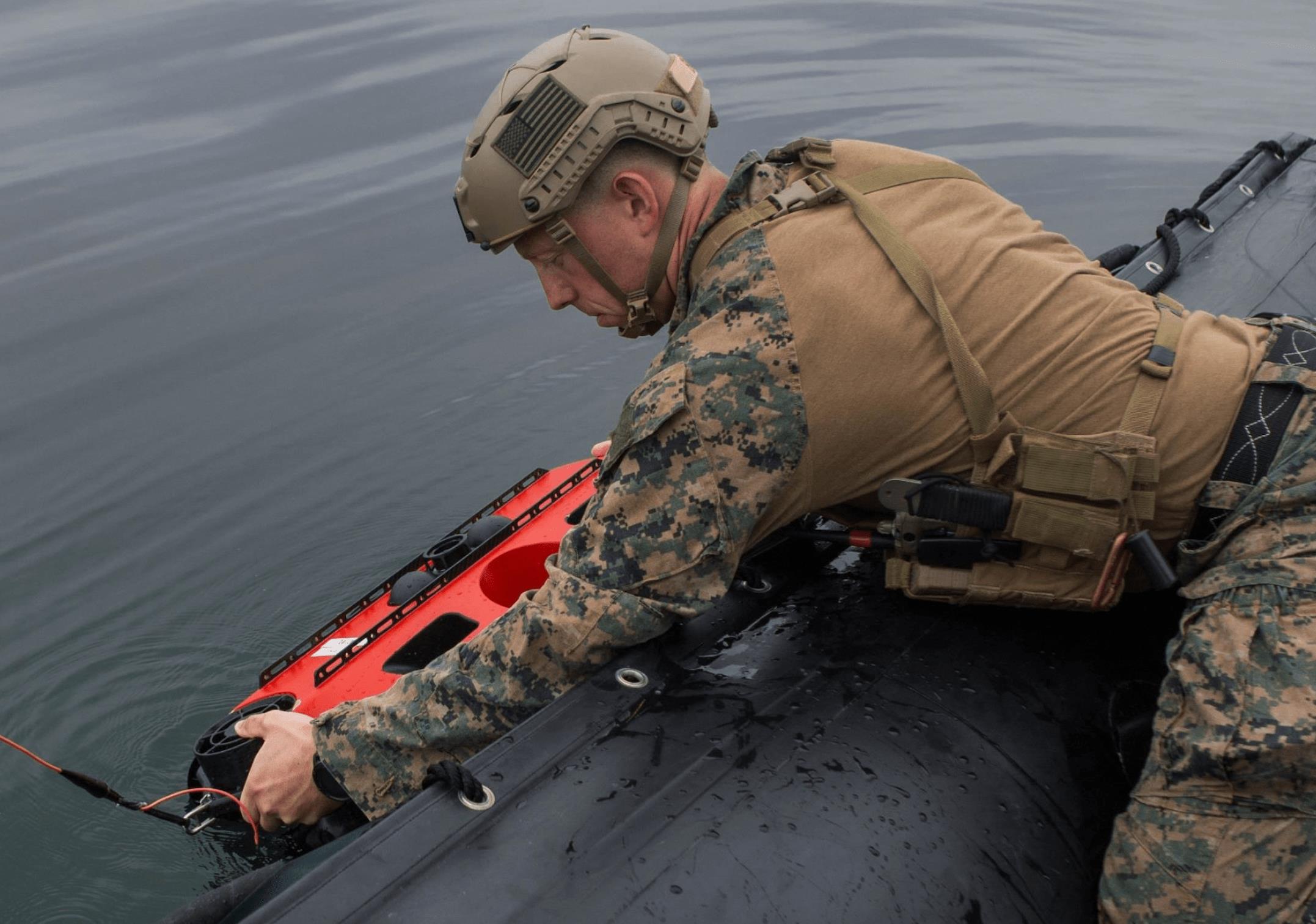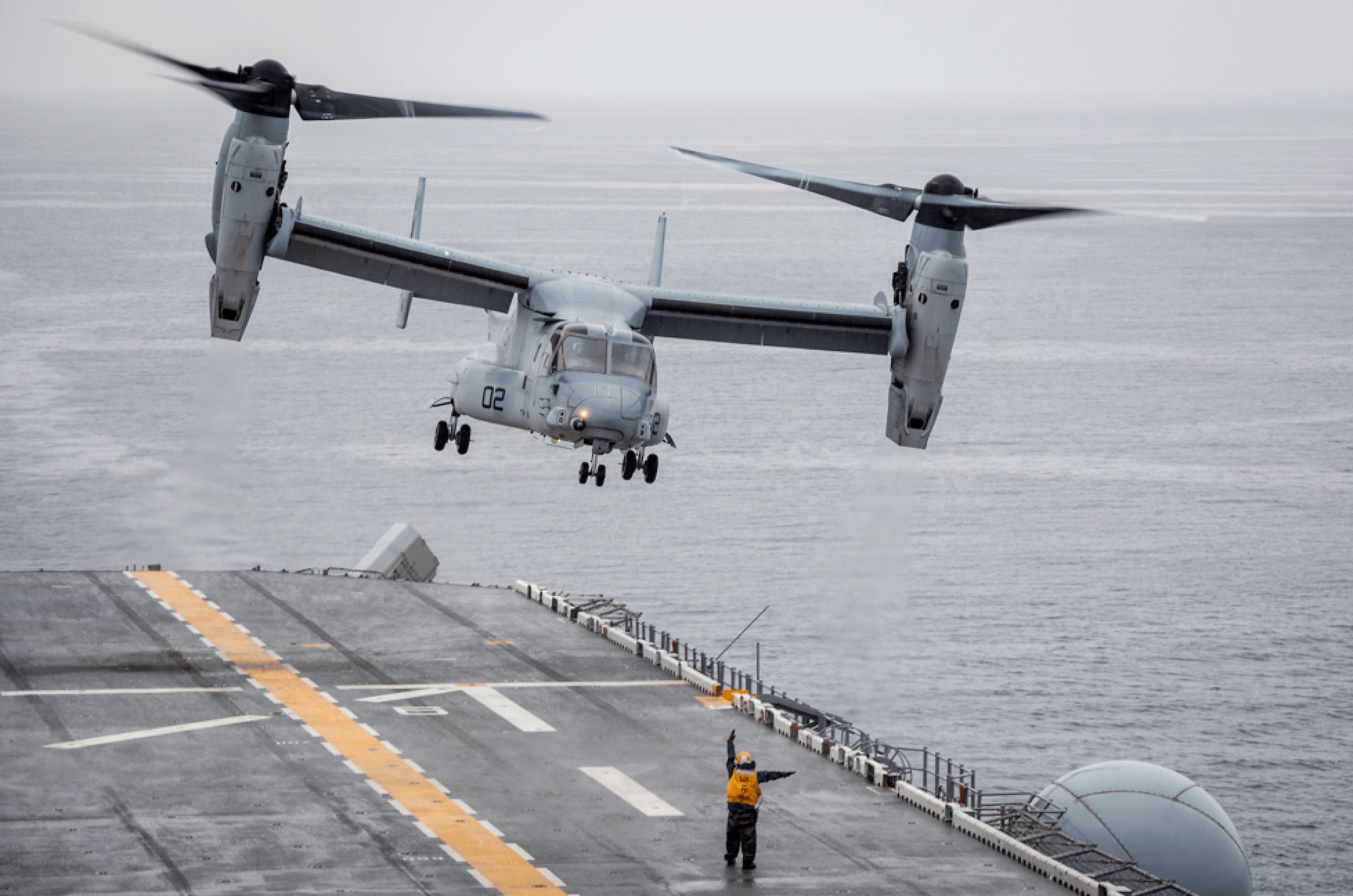(MENAFN- Asia Times) Who needs the US Navy when you have your own underwater robot.
In the past, Marine divers had to swim long distances at limited depths, as they searched for explosive hazards in close proximity.
Traditionally, this was the only way to dispose or disrupt underwater threats — a highly risky exercise.
Enter the Explosive Ordnance Disposal Remotely Operated Vehicle (ROV), a next-generation, box-shaped amphibious, unmanned robot that enables Marines to support littoral (shallow water) operations globally.
“This robot gives Marines eyes in the water,” said Master Sgt. Patrick Hilty, an Explosive Ordnance Disposal project officer at MCSC (Marine Corps Systems Command).“It is a capability the Marine Corps has never before had.”
According to a release from the US Department of Defense, the ROV employs sound navigation and ranging sensors, a high-definition video capability and cameras that provide real-time feedback for EOD divers.
It includes an articulator arm that helps Marines maneuver through underwater foliage or neutralize explosive threats.
“It is a system that saves Marine divers from having to swim hundreds of meters, an activity that can tire them out,” said Hilty.
Marines can use the robot for various amphibious missions.
For example, they can leverage the ROV to search harbors before docking a Marine Expeditionary Unit ship. Operators can use it for activities in very shallow waters, conducting littoral lost object searches, damage assessments and mine countermeasure missions.
Hilty applauded the ROV's tether feature, which keeps EOD technicians at a safe distance from explosive hazards.
“The ROV gives us a remote means to search underwater while also helping us stay at our best when having to prosecute explosive devices,” said Hilty.
Sea mines are widely available — twenty nations export them — and underwater improvised explosive devices can be easily fashioned.
Since World War II, they have sunk or damaged more US Navy ships than air or missile attacks.

Staff Sgt. Seth Barnes, an explosive ordnance disposal technician from Littoral Explosive Ordnance Neutralization Platoon, 7th Engineer Support Battalion, 1st Marine Logistics Group, releases the Remotely Operated Vehicle into the water during a demonstration in San Diego, Calif., Oct. 6, 2021. U.S. Marine Corps photo by Lance Cpl. Kristy Ordonez Maldonado.
To be effective and minimize losses, minesweeping in a non-permissive environment —whether by diver, ship, or helicopter — requires naval and air superiority.
Sea mines require neither; they are a set-and-forget weapon. At Normandy, in spite of Allied-controlled of the area of operation, mines damaged or sunk 43 allied vessels.
Sinking that many ships in a modern context may make an amphibious assault untenable.
Defusing a mine at sea will likely always be more costly and time intensive than deploying it.
Whilst the cost asymmetry of mine warfare can undoubtedly be detrimental to operations — de-mining ships and personnel may take away money that could have otherwise been spent elsewhere — it is the effect of mines on operational goals that is most harmful.
Master Sgt. Matthew Jackson, a staff non-commissioned officer in charge of 1st EOD Company's Littoral Explosive Ordnance Neutralization section, said the ROV is highly stable in an underwater environment.
He noted how the machine requires minimal equipment and reduces the Marine Corps' overall footprint during operations.
“This intuitive system has the ability to complete critical underwater tasks much deeper than manned missions can,” said Jackson.
Jackson also praised the system for its ease of use. He said it requires minimal training when compared with other unmanned underwater systems. This ultimately saves the Marine Corps time and money.
“Instead of sending a Marine to a course for seven or eight weeks, it takes about four days to learn basic operations for successful employment,” said Jackson.
Achieving Force Design 2030 remains an ongoing, concerted effort for the Marine Corps, as repeatedly stated by Commandant of the Marine Corps Gen. David Berger.
This goal requires the acquisition of next-generation, unmanned systems, like the ROV, to support Expeditionary Advanced Base Operations.

Aviation Boatswain's Mate 3rd Class Ethan Pendergrass directs an MV-22 Osprey assigned to Marine Medium Tiltrotor Squadron 263 during flight operations aboard the Wasp-class amphibious assault ship USS Kearsarge. (U.S. Navy photo by Seaman Jesse Schwab)
“We're bringing the EABO concept to the modern day,” said Ronald Diefenbach, a program analyst on the Explosive Hazard Team at MCSC.
“Adhering to this concept, we can use the ROV to support Marines when operating from the littorals and while conducting island-hopping tasks.”
The island-hopping campaign against Japanese forces during World War II was perhaps the US Marine Corps' finest hour.
Today, Marines are trying to ready themselves for a potential conflagration against another Indo-Pacific adversary that has emerged as a great power competitor in the 21st century — China.
This new concept requires a shift in the paradigm in how the Marine Corps operates.
“The pacing threat is China,” said Lt. Gen. Eric Smith, commanding general at Marine Corps Combat Development Command and deputy commandant for combat development and integration.
“We shouldn't sugarcoat that and talk in vague terms. We're talking about China as a pacing threat because of their bellicose actions and language.”
The Corps is not as well postured as it should be to address the challenge, officials say. To get after the problem, the service is pursuing new technologies, force structure changes and operating concepts.
Operating concepts that the Marines are looking to apply in the Indo-Pacific region include distributed maritime ops, littoral ops in a contested environment, and expeditionary advanced base operations.
Operating concepts that the Marines are looking to apply in the Indo-Pacific region include distributed maritime ops, littoral ops in a contested environment and expeditionary advanced base operations.
Marines must be able to employ mobile, low-signature, operationally relevant, and easy to maintain and sustain naval expeditionary forces from a series of austere, temporary locations ashore or inshore within a contested or potentially contested maritime area in order to conduct sea denial, support sea control, or enable fleet sustainment.
Employing these concepts in the Indo-Pacific is no easy task, said Lt. Gen. Mark Wise, deputy commandant for aviation, at the Navy League's Sea-Air-Space conference in August.
“They have been increasing in complexity, they've been increasing in capacity, and they've been doing all of that over the last 20 years. And it's only accelerating right now.
“When you look at an archipelago that's greater than 1,000 islands and you're looking at how you're going to posture in a theater like that … that adds a level of complexity to the challenge you're trying to solve,” he said.
“How are you going to operate in that theater? … It [is] really hard when you're looking at the distances we're covering to do that.”
The Marine aviation community envisions a“defense-in-depth approach,” according to Wise.
Under this construct, F-35B joint strike fighters — which have a short-takeoff/vertical-landing capability — can be deployed from“big-deck” amphibious warships or other locations and operate on the“outer edge” of the battlespace.
Drones such as the MQ-9 Reaper could provide intelligence, surveillance and reconnaissance support.
And transport aircraft such as the V-22 Osprey tiltrotor platform — which can take off and land vertically like a helicopter and then fly faster in fixed-wing mode — would quickly move Marines where they need to go to conduct assaults or perform other missions.
Sources: US Department of Defense, National Defense Magazine, Real Clear Defense
MENAFN24102021000159011032ID1103031239